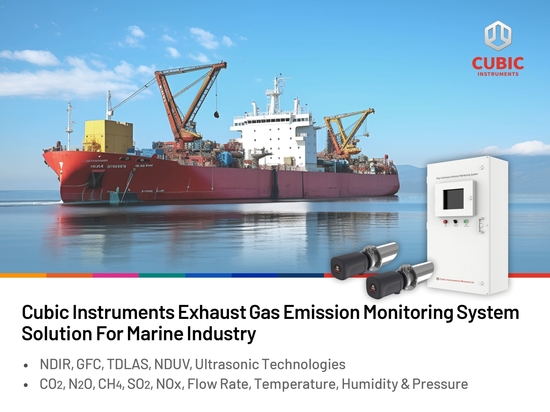
#Industry News
Cubic's Independently Developed Laser Raman Spectroscopy Technology Enables Online Monitoring for Ethylene Cracking Process Control
How Cubic's Laser Raman Spectroscopy Gas Analysis Solution Enhances Ethylene Cracking Process Control
Ethylene Industry Overview
Ethylene is one of the most important basic organic chemical raw materials in the global petrochemical industry and is known as the "mother of chemical industry". As the core monomer of polymer materials such as synthetic resins, synthetic rubbers, and synthetic fibers, ethylene plays a vital role in many industries such as plastics, medicine, textiles, packaging, electronics, automobiles, and construction. Ethylene production typically employs a cracking process, in which feedstocks such as ethane, propane, or naphtha undergo thermal cracking at high temperatures to generate ethylene and other byproducts. Precise control of gas composition can optimize reaction conditions, enhance ethylene yield, minimize byproduct formation, and improve economic efficiency. Therefore, advanced gas analysis technology has become a crucial tool for driving the modernization and intelligent transformation of the ethylene industry.
Ethylene Production Process
Ethylene production primarily relies on the cracking process of petroleum fractions (such as naphtha, liquefied petroleum gas, and ethane). This process involves high-temperature pyrolysis to decompose large hydrocarbon molecules into smaller molecules, mainly ethylene, along with other hydrocarbon byproducts. The process usually includes the following key steps:
1) Raw material pretreatment: Remove sulfides, oxygen-containing compounds and metal impurities to prevent catalyst poisoning or equipment corrosion.
2) High temperature cracking: The preheated raw materials are sent to the cracking furnace and mixed with water vapor at a high temperature of 850-900°C, causing the hydrocarbon molecules to break and form main products such as ethylene, propylene, butadiene, while generating a small amount of by-products such as hydrogen, methane and aromatics.
3) Rapid quenching: The cracking reaction is extremely rapid. To prevent excessive reaction and generation of unnecessary by-products, the cracked gas needs to enter the quenching system immediately and be cooled to below 650°C to terminate the cracking reaction.
4) Gas separation and purification: The quenched cracked gas is compressed, cooled and separated to gradually remove impurities such as tar, acid gas and water. The components such as ethylene, propylene and butadiene are separated and purified through a distillation tower to meet the needs of different industrial uses.
Ethylene Process Measurement Points
Due to the high-temperature, high-pressure conditions, intense chemical reactions, and complex gas composition changes involved in the cracking process, stringent requirements are imposed on online process monitoring.
1) Precise measurement of key gas components: In cracked gas, key components require high-precision measurement. Ethylene and propylene are the primary products, necessitating accurate data acquisition for quality assessment. Acetylene, as a byproduct, should be maintained at low levels (<1%) to prevent contamination of ethylene purity.
2) High-response efficiency: During the cracking process, reactions occur in the radiant section and must be rapidly quenched to prevent further ethylene decomposition into unwanted byproducts. Excessive cracking (caused by high temperatures, prolonged residence time, or inefficient quenching) can result in coke deposition, excessive CH₂, H₂, and CH₄ formation, and increased levels of corrosive gases such as CO, CO₂, and H₂S, ultimately reducing furnace efficiency and shortening equipment lifespan.
3) Stability under harsh operating conditions: The cracking condition is characterized by high temperatures, high pressures, and high humidity. Online monitoring systems must operate reliably under these extreme conditions, with strong resistance to contamination and interference, so as to ensure long-term accuracy and data reliability.
Cubic Solution
The Cubic laser Raman spectroscopy gas analyzer enables rapid and accurate multi-component online monitoring, effectively addressing the challenges of gas measurement in the ethylene cracking process:
High precision: Accurately measures key components such as hydrogen, ethylene, methane, acetylene, etc., providing scientific data support for the cracking reaction.
Fast response: Millisecond-level spectral acquisition allows online monitoring of cracked gas generation and composition changes.
Adaptation to harsh environments: Optional fixed or in-situ installation, optical monitoring technology withstands high-temperature and high-pressure conditions, enhancing measurement system stability.
Nondestructive analysis: multi-component non-destructive analysis, simple system structure, easy operation and maintenance.





